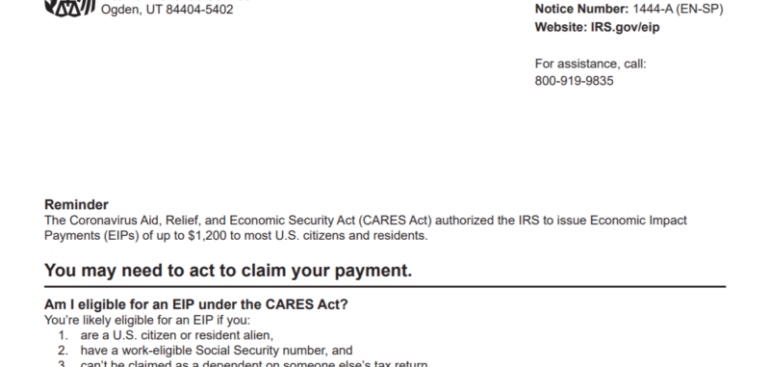People turn to companies of our nature for many different reasons.
Some call because they receive a letter from the IRS. Others wait and call very frantically because of an IRS garnishment or bank levy. Then you have the person who something in their life is forcing them to get back on track. A lot of these people haven’t filed their taxes in many years.
Sometimes this taxpayer is about to get married, and their future spouse is demanding they fix their past mistakes. Other times they may want to buy a home, and this is holding them back. Sometimes the sleepless nights and the life of looking over the shoulder waiting for the IRS to come after them has just become too much.
Whatever the reason it is very important to get the facts first for the taxpayer and then set a full strategy from start to finish of how to get them back on track.
If someone like this has moved since the time of their last filing the IRS would not have their correct address on file. Since they aren’t getting letters, they feel like they are “flying under the radar” of the IRS.
Unfortunately, unless somebody has very minimal income or would be owed refunds if the taxes were filed it very rarely happens that the IRS hasn’t been up to something in the background. This is a very common type of case to take on but once we do our Tax Investigation every case is very different.
Sometimes we actually pull records and find out that the IRS over the many years has done nothing. This is a great thing to find. It is almost like a painter having a blank canvas. We know we can get them back on track and use everything within tax law throughout the whole process to save the client as much money as possible.
In other situations, you will see that the IRS has started filing many of these years. If a taxpayer doesn’t file for many years and has income that has been reported by his employers, then the IRS will typically start filing on behalf of the taxpayer. These are called substitute for returns or SFR’s.
Over the years I have had many clients use the term they had been flying under the radar.
I can remember one client that was positive that he was good and was apprehensive about quote unquote “waking up the sleeping giant.” He hadn’t filed his taxes in 20 years, but he knew it was time to fix this. He hadn’t kept any of his wage & income records except for the present year.
He wanted us to get his w-2‘s and have us file all of the years for him.
I explained to him the process of the Tax Investigation and the possibility that he may not have to file all of the years that he is thinking. In many cases we are able to satisfy the IRS by just filing some of the more recent years. Also, the IRS may have filed some of these years on his behalf.
He agreed that this was the first step that he needed to take and really figure everything out first.
Tax Investigation
Mr. W’s case was one of those cases where he had definitely not been flying under the radar.
We were able to communicate with the IRS very quickly and found that they had been very busy on his case. He was just not aware of any of what was going on because he had never received any of the many letters mailed to old addresses. He owed a substantial balance, so he was very lucky that he hadn’t gotten a surprise garnishment or bank levy because he had been in active collections for years.
It is tough to break the news to a client like this that they have a very serious situation, but clients come to us for the truth, so we showed him everything he had going on within IRS documentation.
At this point Mr. W owed over $50,000.
The IRS had filed many years on his behalf going as far back to 2006. He also still had many years that still needed to be filed. We were able to avoid filing many of the older years that had not been filed. This not only saves the client in the cost of filing but by getting him compliant without filing the older years he will never be responsible to pay the debts that would have been owed from those years.
Mr. W was very excited about this savings alone. He actually admitted that he had almost hired a local tax preparer that wanted to file all of the years for him and charge him a boatload of money for all 20 years.
If he had done that he not only would have owed the tax debt, but the IRS would also backdate the penalties, fees and interest having him owe a serious amount more to the IRS.
The Work
He was in active collections so as we worked for him, we would have to monitor collections to make sure we could keep him protected.
The first step in getting him into some sort of resolution would be to file all of the years that are required. In this case that was 4 years that all had w-2’ income that the IRS provided us. He did not have very good if any withholdings throughout this time so once the filings were assessed he would be owing more to the IRS.
After examining the years that the IRS had filed, we found that these years were all w-2 income with a lack of withholdings as well. So, it would not be beneficial to him to refile these years. He would save more money through one of the hardship programs available with the older assessment dates then he would by going back in and refiling. That’s a big reason we do these tax investigations first.
There is a 10-year statute of limitations on tax debt so the last thing we would want to do is reset that if we can get our client into some sort of small payment option. We really look at everything that can be done to save our clients the most money.
The IRS took a few months to process the returns. Once they were assessed and penalties, fees and interest were added on he owed another $17,000 to the IRS. The next step was to negotiate him into some sort of program dealing with the tax debt.
With this new tax debt combined with the years already in collections he owed approximately $67,000 altogether.
Resolution
Mr. W made pretty good income, but he had very high allowable expenses and lived in a part of the United States with a high cost of living. This is another reason we do these investigations and have thorough conversations of about a client’s present financial situation.
Just like how every case is different how somebody owes a certain amount to the IRS everybody’s financial situation is very different as well.
In this case a good portion of Mr. W’s income was going to court ordered child support.
This is an expense that a taxpayer has a right to pay prior to paying the IRS. This would help us show some sort of inability to pay. Really the worse we can make a taxpayer look legally of course the better program we can get them into to deal with the tax debt.
After months of back and forth with the IRS we were able to prove his financial situation.
Through the program that we were able to negotiate, as long as he does everything correct moving forward, he would only end up paying back $3000 on $67,000. He would be saving $64,000 off of what he owed not to mention tax debt avoid but getting around filing some of the older years.
A good portion of the tax debt would be forgiven in just a few years while the remainder would be forgiven throughout a ten-year period as he paid a very small payment.
The last step in the case was future tax planning.
It is very important that Mr. W does not go back to his bad ways because if he does, he will lose the benefits of the program. He must file every year on time, and he cannot owe another tax debt.
We instructed him exactly where he needs to change his withholdings to so he will never owe the IRS again. As long as he does this after the ten years, he will never owe the IRS again.
If you have not filed taxes out of fear that you will owe the IRS money that you don’t have, contact us for a free tax consultation. Let’s see how we can help you resolve your situation so you can stop worrying about the IRS.




